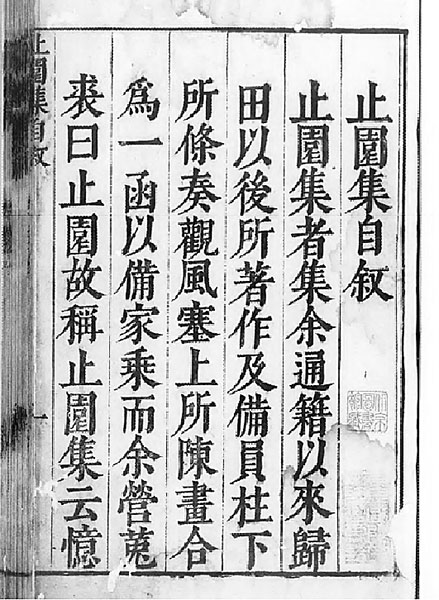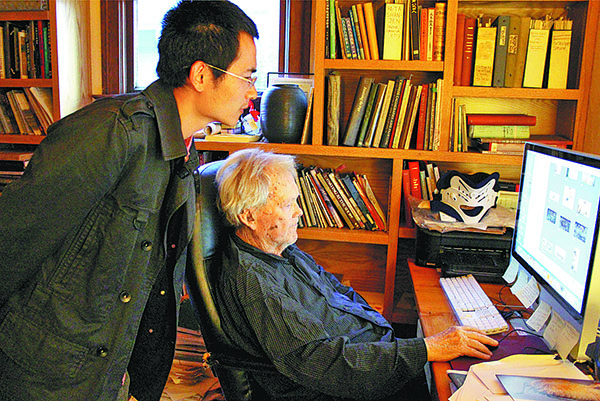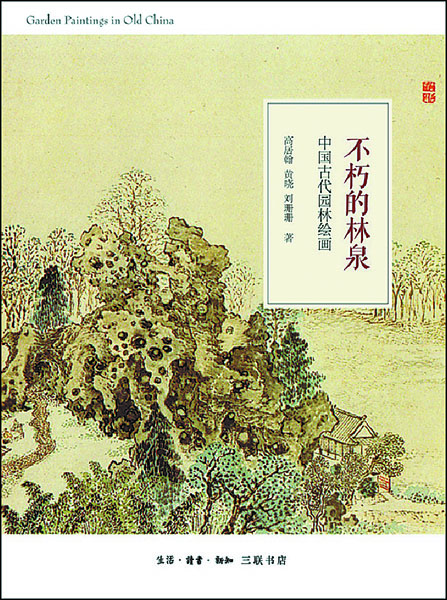

Detective work
When in 2010, Cao Xun, a professor of architecture at Beijing University of Civil Engineering and Architecture, came across the only copy of the 800-page The Zhiyuan Collection amid the sea of old books at the National Library of China, he immediately thought of the photos in Yuanzong. Written by late Ming Dynasty (1368-1644) author Wu Liang, who was a lay Buddhist and who adopted the name Zhiyuan, it is a collection of poems and essays, including the 3,000-word An Ode to Zhiyuan Garden.
Carefully comparing the details in the 14 photos with Wu's poems and essays, Cao became certain that Wu was the owner of the Zhiyuan Garden in Changzhou, which is also in Jiangsu province, and that there must be other leaves to the album. He asked two postgraduate students Huang Xiao and Liu Shanshan, to keep an eye out for any further information they could find.

In 2009, the SDX Joint Publishing Company brought out a series of books by Cahill. Liu and Huang found long discussions about the Zhiyuan album in the Chinese versions of The Compelling Image and Distant Mountains. At Cao's suggestion, they tried to reach Cahill via email to ask him about the album.
"We were just two kids, but surprisingly, Cahill replied. He was very excited about the discovery of An Ode to Zhiyuan Garden, and asked us whether we were serious about the research, and if so, he would send us his material on the garden," said Liu, an associate professor at Beijing University of Civil Engineering and Architecture, in a lecture about the newly published book Zhiyuan Mengxun (A Pursuit of the Dreams About the Zhiyuan Garden), which she co-authored with Huang, who is an associate professor at the Beijing Forestry University.
Although Cahill had written the two books several decades earlier, his interest in the Zhiyuan Garden remained.

A month later, the pair received a package from the US in which they found a whole set of duplicates of the Zhiyuan album and the catalog of the 1996 exhibition, in addition to some 400 pages of literature and two CDs containing images of paintings of gardens that Cahill had collected over the years.
Over the course of almost two years, the trio exchanged 100 emails, researching paintings of Chinese gardens beginning with the Zhiyuan Garden, and discussing the structure, content and pictures of their collaboration fruit, a book eventually published in 2012 titled Garden Paintings in Old China.
"That book is a dialogue that transcends time and space," Liu says, "because we didn't meet until after it was published, and there was a time gap between Cahill's part and our part of the book. His was completed decades ago, and ours had only just been finished."

In 2011, Huang and Liu identified the former location of the 3.33-hectare garden in present-day Changzhou, but most of the land had since become a commercial residential area.
"It was a disappointment for Cahill, who had imagined that after finding the remains of the garden, with enough funding, and the addition of water, rocks and flowers, it would be possible to accurately re-create it according to Zhang Hong's paintings," Liu says.
In 2013, a digital model of Zhiyuan was completed and in 2015, the Museum of Chinese Gardens and Landscape Architecture made an intricate model of the garden to serve as a representative example of the private gardens in the southern reaches of the Yangtze River during the Ming Dynasty, alongside the model of the Old Summer Palace which represents royal gardens in northern China during the Qing Dynasty (1644-1911). Cahill unfortunately passed away in 2014, before the latter was complete.
"At a peak moment for Chinese gardens during the late Ming Dynasty, and designed by one of the greatest garden masters of the period, the Zhiyuan Garden was a milestone in Ming gardens," says Huang.
"It was a masterpiece that integrated artistic forms including literature, calligraphy and painting with the efforts of literati, painters and craftsmen," he continues.
"What's special about the garden is its rich use of water, its combination of garden styles from the north and south, the fact that it is grand and well-structured, and the romantic style used in the design of its rockery."